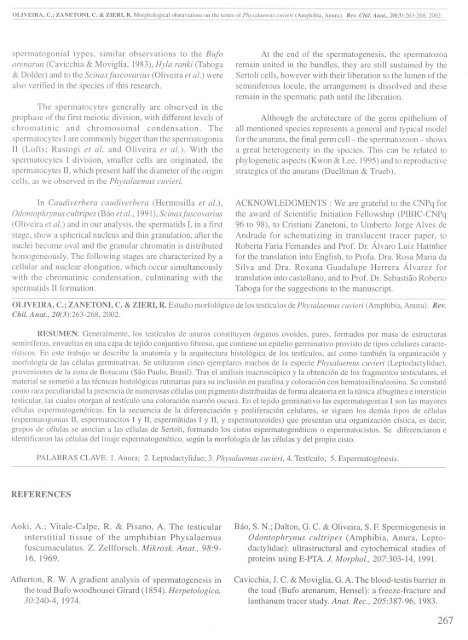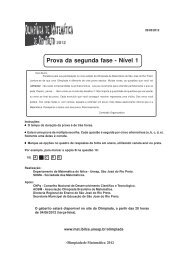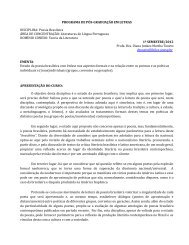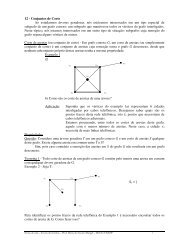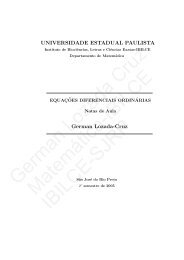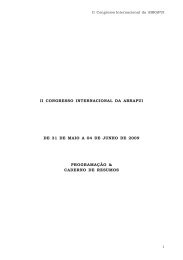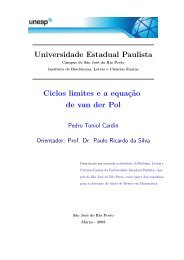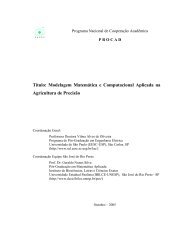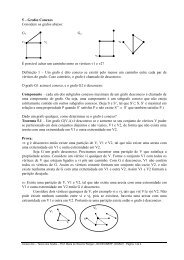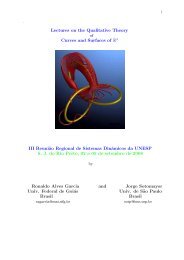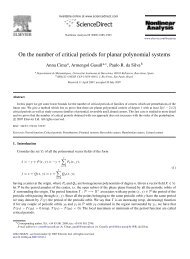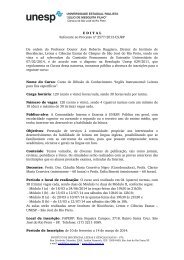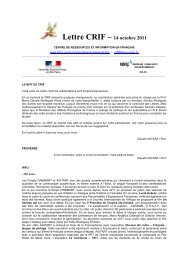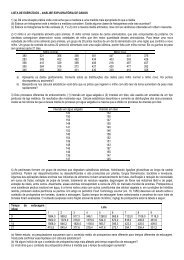MORPHOLOGICAL OBSERVATIONS ON THE TESTES ... - Unesp
MORPHOLOGICAL OBSERVATIONS ON THE TESTES ... - Unesp
MORPHOLOGICAL OBSERVATIONS ON THE TESTES ... - Unesp
You also want an ePaper? Increase the reach of your titles
YUMPU automatically turns print PDFs into web optimized ePapers that Google loves.
OLIVEIRA, C.; ZANET<strong>ON</strong>I, C. & ZIERI, R. Morphological observations on the testes of Physalaemus cllvieri (Amphibia, Anura). Rev. Chi!o Allal., 20(3):263-268. 2002.spermatogonial types, similar observations to the Bufoarenarun (Cavicchia & Moviglia, 1983), Hyla ranki (Taboga& Dolder) and to the Scinaxfuscovarius (Oliveira et ai.) werealso verified in the species of this research.The spermatocytes generally are observed in theprophase of the first meiotic division, with different levels ofchromatinic and chromosomal condensation. Thespermatocytes l are commonly bigger than the spermatogoniaII (Lofts; Rastogi et ai. and Oliveira et ai.). With thespermatocytes l division, smaller cells are originated, thespermatocytes lI, which present half the diameter of the origincells, as we observed in the Physalaemus cuvieri.ln Caudiverbera caudiverbera (Hermosilla et ai.),Odontophrynus cultripes (Báo et ai., 1991), Scinaxfuscovarius(Oliveira et ai.) and in our analysis, the spermatids l, in a firststage, show a spherical nucleus and thin granulation, after thenuclei become oval and the granular chromatin is distributedhomogeneously. The following stages are characterized by acellular and nuclear elongation, which occur simultaneouslywith the chromatinic condensation, culminating with thespermatids II formation.At the end of the spermatogenesis, the spermatozoaremain united in the bundles, they are still sustained by theSertoli cells, however with their liberation to the lumen of theseminiferous locule, the arrangement is dissolved and theseremain in the spermatic path until the liberation.Although the architecture of the germ epithelium ofali mentioned species represents a general and typical modelfor the anurans, the final germ cell- the spermatozoon - showsa great heterogeneity in the species. This can be related tophylogenetic aspects (Kwon & Lee, 1995) and to reproductivestrategies of the anurans (Duellman & Trueb).ACKNOWLEDGMENTS : We are grateful to the CNPq forthe award of Scientific lnitiation Fellowship (PIBlC-CNPq96 to 98), to Cristiani Zanetoni, to Umberto Jorge Alves deAndrade for schematizing in translucent tracer paper, toRoberta Faria Femandes and Prof. Dr. Álvaro Luiz Hattnherfor the translation into English, to Profa. Dra. Rosa Maria daSilva and Dra. Roxana Guadalupe Herrera Álvarez fortranslation into castellano, and to Prof. Dr. Sebastião RobertoTaboga for the suggestions to the manuscript.OLIVEIRA, c.; ZANET<strong>ON</strong>I, C. & ZIERI, R. Estudio morfológico de los testículos de Physalaemus cuvieri (Amphibia, Anura). Rev.Chi!oAnat., 20(3):263-268, 2002.RESUMEN: Generalmente, los testículos de anuros constituyen órganos ovoides, pares, formados por masa de estructurasseminíferas, envueltas en una capa de tejido conjuntivo fibroso, que contiene un epitelio germinativo provisto de tipos celulares característicos.En este trabajo se describe Ia anatomía y Ia arquitectura histológica de los testículos, así como también Ia organización ymorfología de Ias células germinativas. Se utilizaron cinco ejemplares machos de Ia especie Physalaemus cuvieri (Leptodactylidae),provenientes de Ia zona de Botucatu (São Paulo, Brasil). Tras el análisis macroscópico y Ia obtención de los fragmentos testiculares, elmaterial se sometió a Ias técnicas histológicas rutinarias para su inclusión en parafina y coloración con hematoxilina/eosina. Se constatócomo rara peculiaridad Ia presencia de numerosas células con pigmento distribuidas de forma aleatoria en Ia túnica albugínea e intersticiotesticular, Ias cuales otorgan ai testículo una coloración marrón oscura. En el tejido germinativo Ias espermatogonias I son Ias mayorescélulas espermatogenéticas. En Ia secuencia de Ia diferenciación y proliferación ce]ulares, se siguen ]os demás tipos de células(espermatogonias lI, espermatocitos I y lI, espermátidas I y lI, y espermatozoides) que presentan una organización cística, es decir,grupos de cé]ulas se asocian a ]as célu]as de Sertoli, formando ]os cistos espermatogenéticos o espermatocistos. Se diferenciaron eidentificaron Ias células dellinaje espermatogenético, según ]a morfología de ]as células y dei propio cisto.PALABRAS CLAVE: 1.Anura; 2. Leptodactylidae; 3. Physalaemus cuvieri, 4. Testículo; 5. Espermatogénesis.REFERENCESAoki, A.; Vitale-Calpe, R. & Pisano, A. The testicularinterstitial tissue of the amphibian Physalaemusfuscumaculatus. Z. Zellforsch. Mikrosk. Anat., 98:9-16, 1969.Atherton, R. W. A gradient analysis of spennatogenesis inthe toad Bufo woodhousei Girard (1854). Herpetologica,30:240-4, 1974.Báo, S. N.; Dalton, G. C. & Oliveira, S. F. Spermiogenesis inOdontophrynus cultripes (Amphibia, Anura, Leptodactylidae):ultrastructural and cytochemical studies ofproteins using E-PTA. 1. Morphol., 207:303-14, 1991.Cavicchia, 1. C. & Moviglia, G. A. The blood-testis barrier inthe toad (Bufo arenarum, HenseI): a freeze-fracture andlanthanum tracer study. Anat. Rec., 205:387-96, 1983.267


